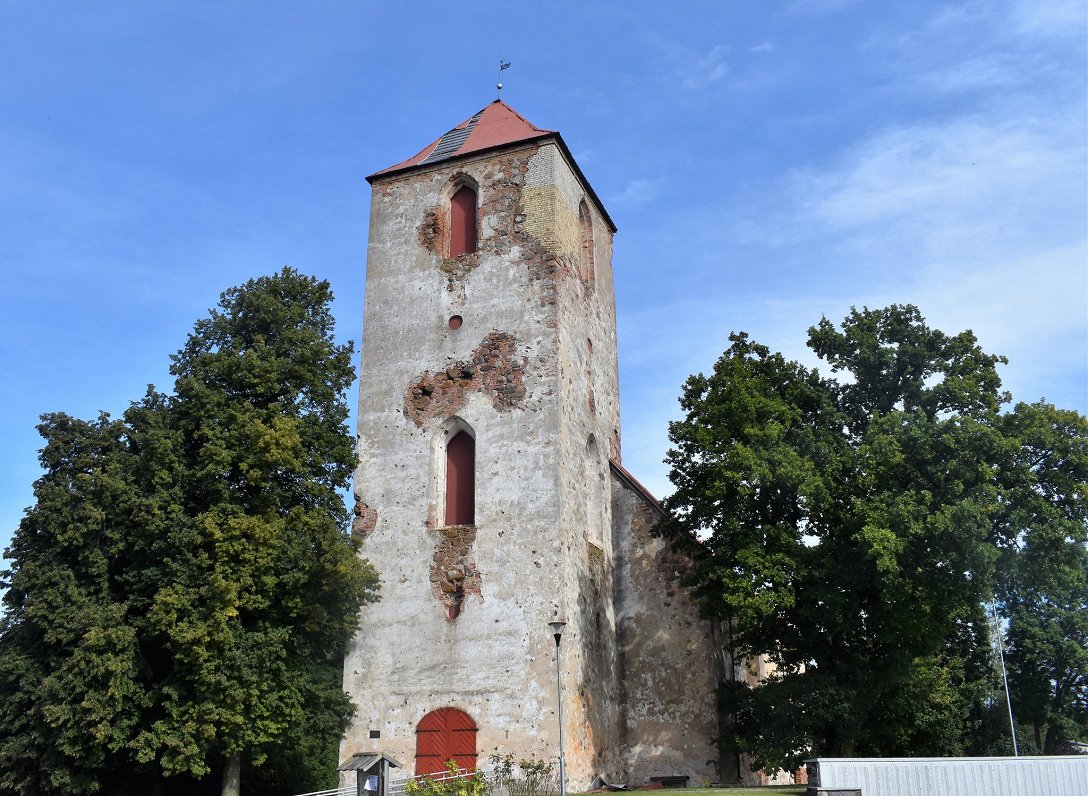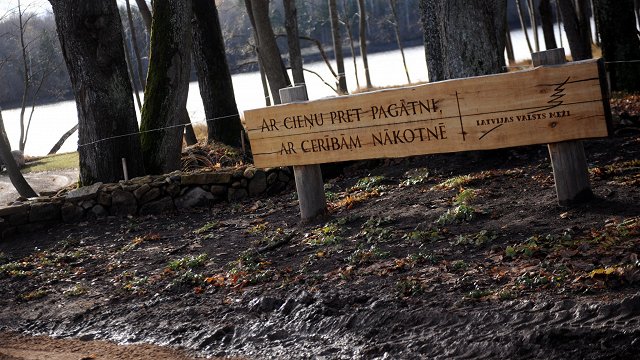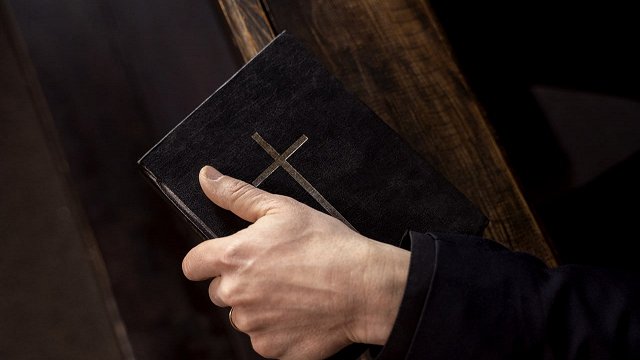The Reformation arrived in Latvia in 1522, bringing with it fanatical vandalism of ornate church interiors deemed as idolatrous. But within a few generations, beauty was once again seen as pleasing to the Almighty.
And in this spirit, in 1700, Baron Karl Friedrich von Fircks decided to add a lavish Baroque interior to a modest country church in Lestene, 70 kilometers west of Rīga. To this end, he hired Ventspils woodcarver Nikolass Sefrenss the Younger who spent the next decade creating a timber masterpiece that has no equal in Latvia.
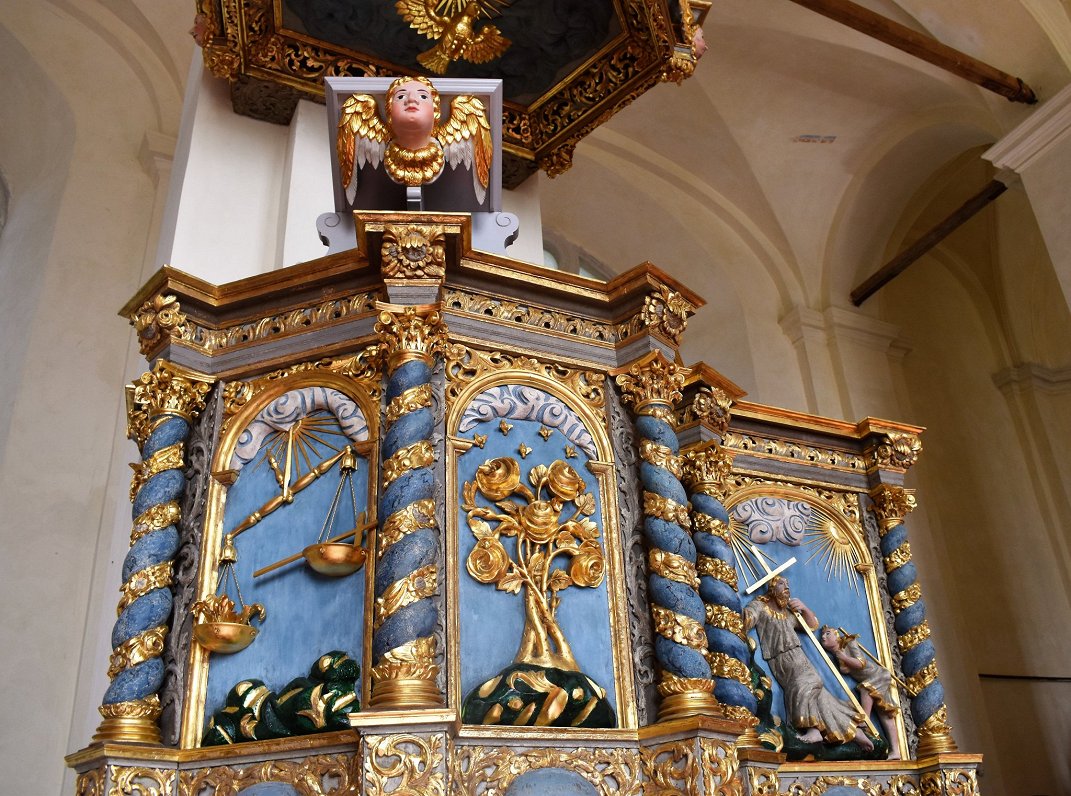
An elaborate pulpit and a towering 10.5 meter high altar retable were alive with Biblical saints and symbols from nature. The organ decking included moving angels, a three-dimensional show which so impressed worshipping peasants that they are said to have cried out “Ak, svētā Lestene!” (Oh, holy Lestene!) upon seeing it.
Sefrenss perished from the plague in 1710, and the job of painting and gilding the objects wasn’t completed for several more decades. Then the church enjoyed two centuries of peaceful splendor.
However, in the final months of the Second World War, as western Latvia was ravaged by the battles of the Courland Pocket, the church steeple burned down. The building’s structural integrity was preserved, but the interior faced a mortal threat in the post-war years. Ordered by local communist officials to destroy the priceless artworks, some of the pieces being hidden by the local school principal at her workplace. When she was threatened, they were spirited to the attic of the Academy of Art in Riga, where once again communist functionaries raised their ugly heads.
Another group of sculptures was taken to another Kurzeme church for safekeeping. But as bad luck would have it, right at that time that refuge was used as a movie set, and the film crew inadvertently destroyed many of the items.
Eventually, the administrators of Rundāle Palace had the courage to pick up the pieces which could be saved and deposit them in their vast basement. Which was fortunate, as in the 1960s a granary was installed in the church, erasing what was left of the old grandeur.
“Many cultural monuments in Latvia were being destroyed at the time, and Rundāle was like a lifeboat,” says Inguna Kokina, the lay head of church’s parish council.
In a sense, she muses, it was good that the local collective farm decided to use the building, as other churches had simply been razed to the ground in officially sanctioned campaigns of atheistic violence.
Indeed, there had been plans to dynamite Lestene’s church, but there weren’t enough explosives to deal with its two-meter-thick walls.
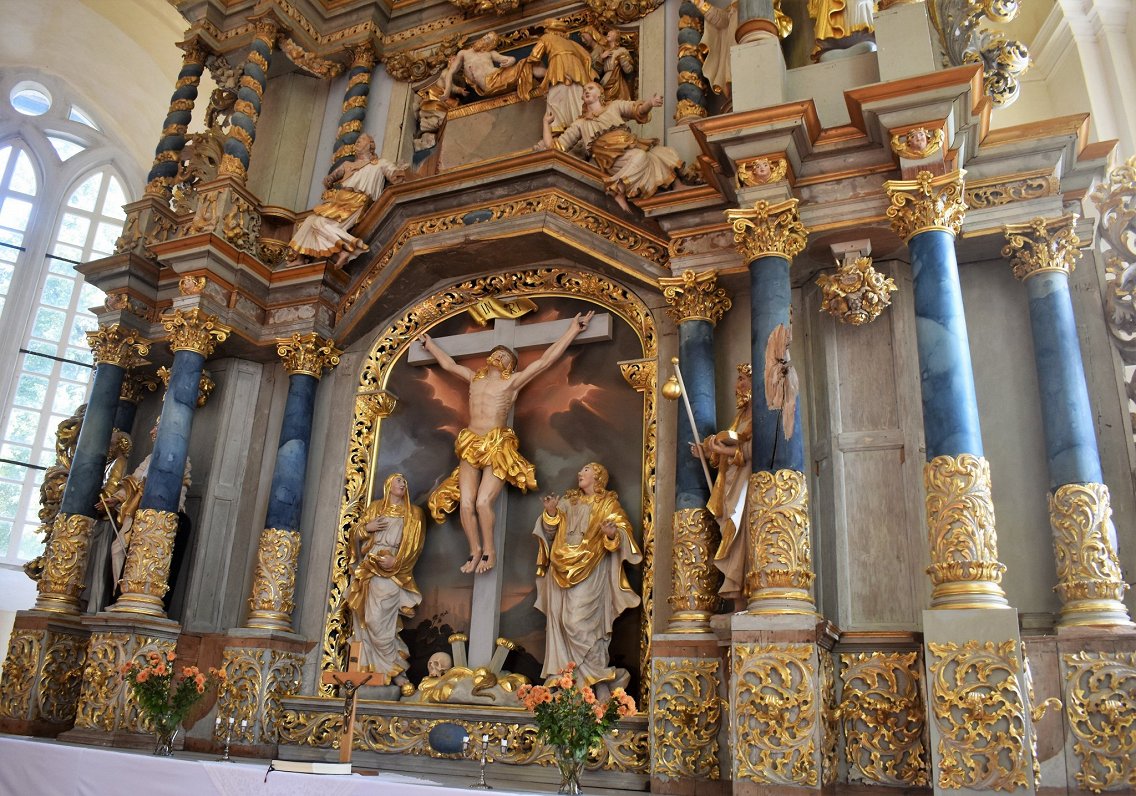
Inguna’s grandmother worked for the barons before the war, and she herself recalls playing inside the church as a child. And for several decades she has been in the midst of efforts to bring it back to life.
In the early 2000s, a war cemetery was installed next door to bring together the many scattered graves of Latvian soldiers who died fighting in the Courland Pocket as part of the German-uniformed Latvian Legion. And after that weighty task was completed, Inguna says that a group of activists decided it was a shame to have the church in such a sorry state next to this place of remembrance.
Beginning in 2011, the surviving parts of the pulpit and altar retable were returned to Lestene. Surviving figures from the ensembles have been rejuvenated and missing pieces have been created anew by skilled artisans, based on photographs from the 1930s.
The craftsmen often work for very modest fees out of their passion for the project. But the cost of materials means it doesn’t come cheap. State culture funds are elusive, Inguna sighs, as the officials in charge have repeatedly said that other sites have priority.
But the work continues as private donations trickle in. Once the elements now in place have been finished, the mighty organ setting will be brought back from Rundāle, completing the resurrection of this unique monument.
Sunday services are held fortnightly by a clergyman who covers a number of rural parishes around Tukums County. On average only about ten worshippers turn up each time (although pre-Covid Christmas events attracted a full house).
According to Inguna, this is partly due to the shifting demographics of Lestene. Due to wartime devastation, many locals moved away, and they were replaced by immigrants from Latgale and other parts of the former USSR. Fourteen nationalities reside in the area, and although most are well integrated, there is a lack of historical continuity.
Still, Inguna says that the regular parishioners are a tight-knit group. And the community of supporters of the church stretches around the world.
Need to know
The best time to see inside the church is during Sunday services. Services are held every second and fourth Sunday of the month at 12:00.
There is no direct public transport to Lestene from Riga. It’s a one-hour drive.
The church welcomes donations for the ongoing restorations.
